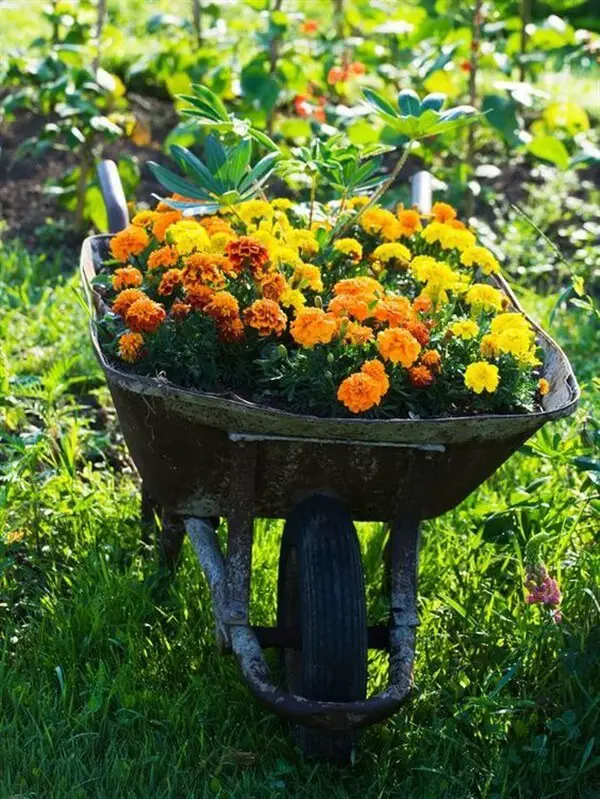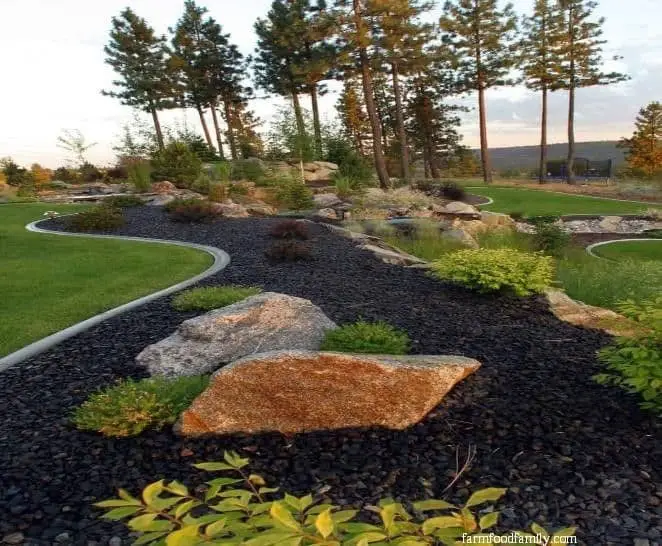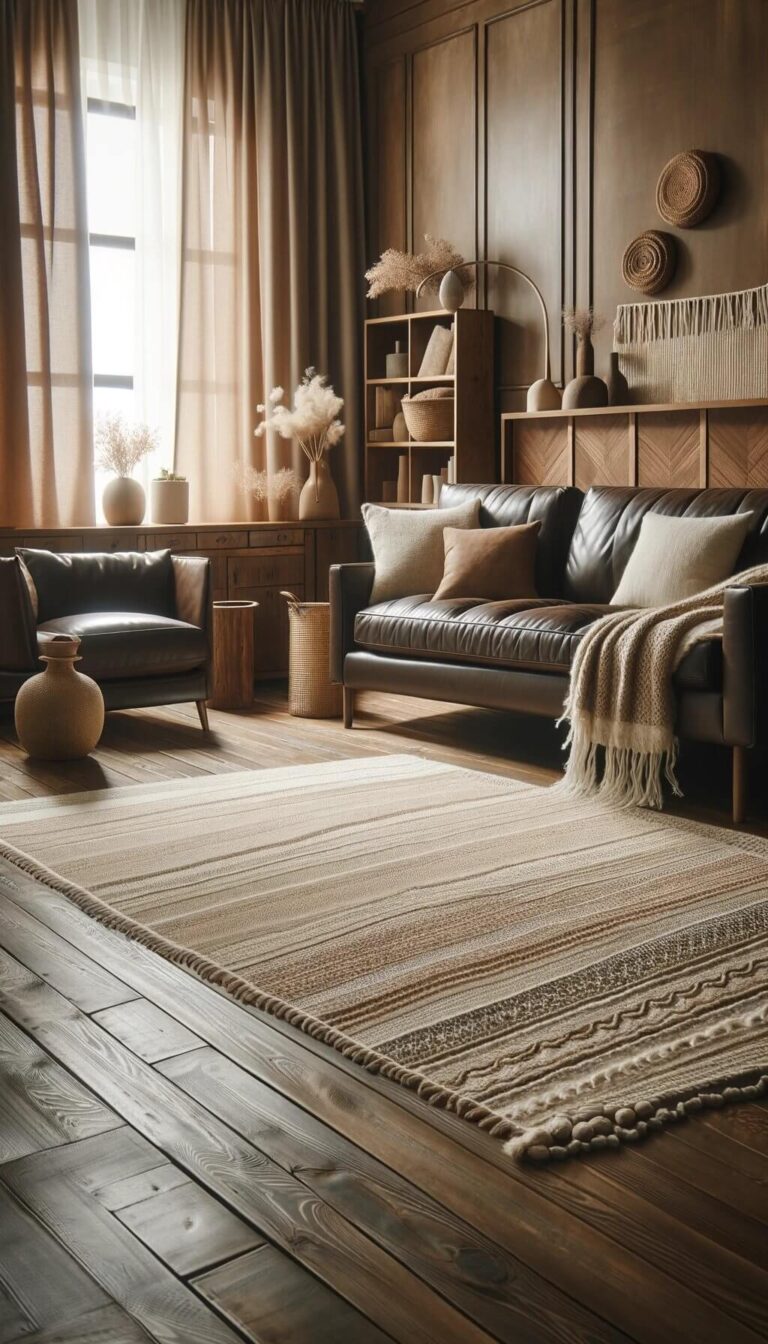10 Types Of Ash Wood: Pros, Cons, And Where To Use It (With Pictures)
Looking for a versatile type of wood that offers a unique combination of characteristics and uses? Ash wood is an excellent choice. This popular timber has been used in various applications, from flooring to furniture, and its adaptability has made it a favorite among craftsmen and homeowners alike.
In this article, we’ll delve into the world of ash wood, exploring its history, characteristics, and different types, including black ash, blue ash, European ash, green ash, olive ash, Oregon ash, pink ash, pumpkin ash, Tamo ash, and white ash. We’ll also touch on where you can use ash wood in your home or business. Whether you’re looking to create a stunning piece of furniture or add a touch of elegance to your interior design, ash wood is an excellent option to consider.
What is ash wood?
Ash wood, a robust and resilient hardwood, boasts exceptional strength and longevity, rendering it an ideal material for crafting furniture and flooring. Its visually striking grain pattern only adds to its allure. Moreover, ash wood is remarkably easy to work with, making it a favored choice among both novice and experienced woodworkers alike, as they can effortlessly shape and mold the wood to create their desired designs.
History of ash wood
For centuries, the versatile Ash wood has been utilized in various applications. Its close grain makes it an excellent material for crafting furniture, flooring, and other woodworking projects. The wood’s exceptional strength and aesthetic appeal have also made it a popular choice for sports equipment, such as baseball bats. Native to North America, Europe, and Asia, the tree itself has a rich history dating back to when indigenous peoples first used its timber for canoes, spears, and bows.
Later, European settlers adopted Ash wood for various purposes, including furniture-making and cabinetry. Today, despite advancements in technology and materials, Ash wood remains a sought-after option due to its enduring strength, beauty, and eco-friendly nature as a renewable resource.
Uses of Ash Wood
Ash wood, known for its robust characteristics, boasts a dense, strong, and rigid composition. Its tightly packed grain structure makes it highly resistant to shock and impact. This durable hardwood is commonly utilized in the creation of furniture, flooring, doors, tool handles, and even baseball bats. The heartwood of ash wood tends towards a pale brown or white hue, while the sapwood exhibits a creamy white coloration.
The wood’s texture is generally medium-coarse, with a straight grain that can occasionally display subtle curls or waves. One of the most notable aspects of ash wood is its ease of working, allowing it to accept nails, screws, and adhesives without issue. When it comes to finishing, ash wood responds well to staining or painting, and can be polished to a high gloss. Its natural beauty can also be left untouched, making it an excellent choice for both indoor and outdoor projects.
Characteristics of Ash Wood
Ash wood, a dense and strong hardwood, boasts an impressive combination of flexibility and durability, making it a top choice for furniture and flooring applications. Its straight and even grain pattern features a light to medium brown hue, adding to its natural beauty. For centuries, ash wood has been prized for its strength and durability, earning it a reputation as a timeless material for both modern and antique furniture pieces.
Moreover, its versatility extends to flooring, where it can withstand the demands of heavy traffic and wear, ensuring a long-lasting and attractive appearance.
What Color is Ash Wood?
Ash wood, characterized by its pale hue reminiscent of white, boasts an exceptionally fine grain and impressive strength. This versatile material finds applications in the creation of furniture and flooring, as well as in the production of sports equipment such as baseball bats and hockey sticks. Beyond its primary uses, ash tree leaves are harvested for tea, while the wood itself is converted into charcoal suitable for grilling meat.
How Dense is Ash Wood?
Ash wood stands out for its exceptional density, which makes it an excellent choice for crafting furniture and other items that require durability. However, this same density presents a challenge for those new to woodworking, as it can be demanding to work with. In contrast, despite its high density, ash is relatively lightweight, allowing for easy movement and handling during the creative process.
Moreover, this wood boasts impressive strength, capable of supporting significant weight without compromising on integrity.
What is the source of ash wood?
Ash wood originates from its tree species. In North America, the white ash (Fraxinus americana) is a prominent source, valued for its strength and durability, making it a favored choice for furniture and woodworking projects. This versatility stems from the tree’s robust nature, with some species reaching heights of up to 60 feet and trunk diameters of three feet or more. The compound leaves, comprising up to seven leaflets each, are a distinctive feature of the white ash.
Small green flowers cluster together, while the fruit takes the form of winged seeds dispersed by wind currents. As a result of its robustness, the wood is resistant to rot and insect damage, making it suitable for sports equipment like baseball bats and hockey sticks, as well as general woodworking applications. Ash trees thrive in many regions worldwide, including North America, Europe, and Asia, with several species found in each continent.
Notably, some introduced species exist in Australia, although the native range of ash trees does not include this country.
Is ash straight grained?
Characterized by its straight-grained pattern, where the wood fibers run largely parallel to the lumber’s length, ash wood offers a unique advantage in terms of workability. The uniform grain structure enables smooth finishes and streamlined processing, making it an attractive choice for various projects. Moreover, as a robust and durable hardwood, ash is well-suited for a broad range of applications, leveraging its impressive strength and resistance to withstand diverse demands.
Types of ash wood
While ash wood is renowned for its versatility, there’s an astonishing array of species to explore. The distinct features of each variety set them apart, making it essential to delve into their characteristics. Let’s take a closer look at some of the most sought-after types:
Black Ash (Fraxinus nigra)
Black ash is a versatile type of wood that excels in its durability and workability. Its dark brown to black coloration, combined with a fine grain structure, makes it an attractive option for furniture makers and firewood enthusiasts alike. With its hard and dense composition, black ash is resistant to wear and tear, ensuring that it remains long-lasting and low-maintenance. Furthermore, the wood takes a finish well, allowing users to easily enhance its natural beauty.
Native to the eastern United States and Canada, black ash trees typically reach maturity at 20-30 years old, with some specimens growing up to 100 feet tall and boasting trunk diameters of up to three feet. While black ash has many advantages, it also presents some limitations. For instance, it is more prone to rot and insect damage compared to other types of wood. Additionally, its strength falls short of that found in certain hardwoods like oak or maple.
Nevertheless, the pros of using black ash wood – including its ease of workability and attractive appearance – make it a popular choice for various applications.
Blue Ash (Fraxinus quadrangulate)

Blue ash, a native North American species, boasts a striking blue-gray bark that sets it apart from other ash tree varieties. Reaching heights of 30-40 feet, this sturdy tree’s foliage features seven to nine leaflets arranged oppositely along the stem. Small, greenish-white flowers and brownish-black seeds clustered together are additional distinguishing characteristics.
As a hardwood, blue ash is renowned for its exceptional strength, heaviness, and resistance to decay and insect damage.
Its straight grain and fine texture make it an ideal choice for crafting furniture, flooring, and cabinetry. Additionally, the wood’s versatility extends to making charcoal and smoking meats.
The benefits of blue ash are multifaceted, including its remarkable strength, durability, and natural resistance to rot and pests. The wood also responds well to finishing and is an excellent selection for furniture-making, flooring installation, and cabinetry projects.
While blue ash offers many advantages, it does present some drawbacks. Its heaviness can make it challenging to work with, and the wood’s relative scarcity may lead to higher prices. Nevertheless, the unique characteristics and exceptional qualities of blue ash make it a sought-after choice for woodworking enthusiasts and professionals alike.
European Ash (Fraxinus excelsior)
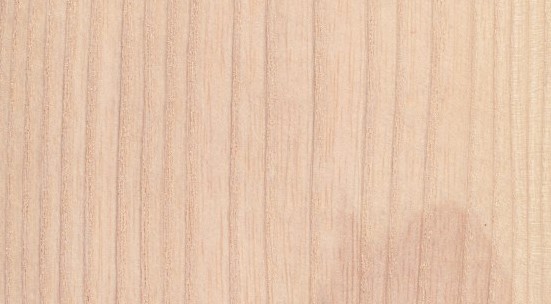
European ash wood, a hardwood derived from the ash tree, boasts an impressive array of characteristics that make it an attractive option for various applications. Its dense and rigid properties render it well-suited for furniture and flooring construction, while its strength and durability also lend themselves to uses in baseball bats and hockey sticks. The wood’s light brown hue is complemented by a straight or slightly wavy grain pattern.
One of the most significant advantages of European ash wood is its exceptional resistance to rot and insect damage, making it an excellent choice for projects where longevity is paramount. Additionally, the wood is relatively easy to work with, allowing for effortless staining and painting processes. However, European ash wood does have a few drawbacks that should be considered. Its cost can be prohibitively high, potentially pricing out some consumers.
Furthermore, its availability in North America may be limited, adding an extra layer of complexity to procurement efforts.
Green Ash (Fraxinus pennsylvanica)
Green ash wood, a type of ash wood, is renowned for its exceptional durability and strength, making it an excellent choice for crafting high-quality furniture and cabinetry. Its versatility also makes it accessible to both novice and experienced woodworkers. The wood’s straight grain pattern adds a sleek and modern touch to any piece, further solidifying its appeal.
While green ash wood offers many benefits, one of the primary drawbacks is its relatively higher price point compared to other types of wood. This may be a barrier for those on a budget or just starting out with woodworking projects. Additionally, finding high-quality green ash wood can be challenging due to its limited availability in comparison to other woods.
Olive Ash
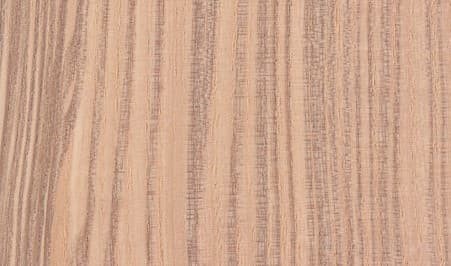
Olive ash wood is a hardwood that originates from the olive tree, boasting exceptional durability and strength. Its dense structure makes it an excellent choice for furniture and flooring applications. The grain pattern exhibits a range of textures, from straight to wavy, while the color palette varies from light to dark brown hues. This versatile wood offers a unique opportunity to infuse elegance into any living space.
However, its density can make it challenging to work with, and if not properly maintained, it may be prone to warping or cracking.
Oregon Ash (Fraxinus latifolia)

Oregon ash wood originates from the native Oregon ash tree, found in western states such as Oregon, California, and Idaho. Its durability and strength make it a sought-after material for furniture and flooring applications. The wood’s workability is also noteworthy, allowing for effortless cutting, drilling, and sanding. Moreover, Oregon ash wood boasts a unique grain pattern that can elevate the aesthetic appeal of your home decor.
The advantages of Oregon ash wood are multifaceted.
Its exceptional strength and durability render it an excellent choice for furniture and flooring. Additionally, the wood is easy to work with, requiring minimal effort for cutting, drilling, and sanding. Furthermore, its beautiful grain pattern can add a touch of sophistication to your home’s décor.
While Oregon ash wood has its merits, there are some drawbacks to consider.
One potential limitation is its relatively low resistance to rot and decay compared to other hardwoods, making it less suitable for outdoor furniture or areas prone to moisture. Moreover, the wood may be susceptible to insect damage, emphasizing the importance of taking measures to protect it from pests.
Pink Ash (Alphitonia petriei)
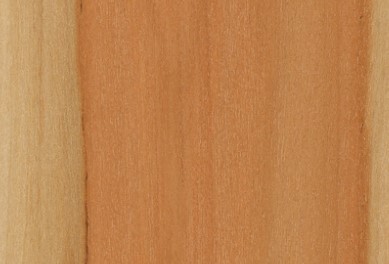
Pink ash wood is a robust and long-lasting hardwood, renowned for its striking pinkish hue. Its remarkable strength and durability make it an excellent choice for crafting furniture and cabinetry. In fact, pink ash is one of the heaviest woods available, rendering it particularly well-suited for creating sturdy pieces that can withstand significant weight or stress.
Beyond its impressive physical characteristics, pink ash wood also boasts a unique aesthetic appeal.
The subtle pink tint adds a touch of sophistication and refinement to any piece, making it an ideal material for designers seeking to create distinctive, high-end creations.
While pink ash wood undoubtedly offers many advantages, there are some notable drawbacks to consider. One major limitation is its relatively high cost, which may be out of reach for some budgets.
Additionally, the wood’s heaviness can make it more challenging to work with, particularly when precision and delicacy are required.
In summary, pink ash wood is a remarkable material that offers a unique combination of strength, durability, and aesthetic appeal. While its higher cost and potential difficulties in working with may pose some challenges, the benefits it provides make it an excellent choice for those seeking to create exceptional pieces.
Pumpkin Ash (Fraxinus profunda)

Pumpkin ash wood is a highly sought-after hardwood that originates from the pumpkin ash tree, native to North America’s eastern United States. Characterized by its vibrant orange-brown hue reminiscent of pumpkins, this versatile wood can grow up to 100 feet tall and have a diameter of three feet. The strength and durability of pumpkin ash wood make it an ideal choice for crafting furniture, flooring, and even constructing buildings like homes and other structures.
Harvested every 20-30 years, the wood is put to various uses. The benefits of pumpkin ash wood are numerous. It boasts exceptional strength and durability, rendering it perfect for furniture and flooring applications. Additionally, it exhibits resistance to rot and insect damage, making it a top pick for cabinetry, where its stain-holding capabilities and beautiful grain pattern are particularly valued.
Pumpkin ash wood also finds use in boat construction, as its natural resistance to warping is a significant asset. Furthermore, its mild, sweet flavor makes it an excellent choice for smoking meats. Despite its many advantages, pumpkin ash wood does have some drawbacks. Its hardness and density can make it challenging to work with, increasing the risk of splintering.
Moreover, while pumpkin ash wood is generally suitable for indoor use, direct sunlight can cause it to discolor, making it less than ideal for outdoor applications.
Tamo Ash (Fraxinus Lanuginosa)
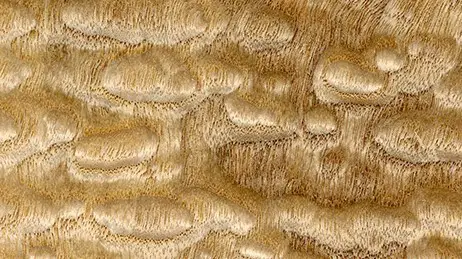
Tamo ash wood is a highly prized hardwood that offers a unique combination of strength, durability, and aesthetic appeal. Its versatility has made it a popular choice for crafting furniture, musical instruments, and even watercraft. The wood’s distinctive grain pattern, coupled with its ability to take stains and paints well, allows it to be used in a wide range of applications.
In addition to its impressive physical properties, Tamo ash is also resistant to rot and pests, making it an ideal choice for outdoor furniture and construction projects. Its light brown color with subtle pinkish undertones adds a touch of warmth and sophistication to any setting.
While Tamo ash wood is not without its drawbacks – it can be less accessible than other types of wood and may require more effort due to its density – its many benefits make it a valuable material for those seeking high-quality, long-lasting results.
White Ash (Fraxinus Americana)

White ash wood is a highly prized type of hardwood, renowned for its remarkable strength and durability. Its light brown hue, adorned with a subtle grain pattern, makes it an attractive option for furniture and flooring applications. Native to North America, white ash trees can grow up to 100 feet tall and three feet in diameter, making them a significant presence in the natural landscape.
As the heaviest and hardest of all ash species, white ash wood is an excellent choice for those seeking a robust and long-lasting material. While its strength and durability are undeniable benefits, they’re not the only advantages that make white ash wood so popular. Its light color and slight grain pattern also make it easy to work with and receptive to staining, allowing for a wide range of design possibilities. However, as with any natural material, there are some drawbacks to consider.
White ash wood is not particularly resistant to decay or insect damage, and its availability can be limited in certain regions.
FAQs about Ash Wood
Is ash a hard or soft wood?
While it may seem straightforward to determine the hardness of ash wood, the truth is that it can vary significantly depending on the specific tree species. In general, North American ash tends to be harder than its European counterpart, due in part to faster growth rates and higher density. However, this isn’t a hard and fast rule – some European ash trees can produce wood that rivals or even surpasses American ash in terms of hardness. It ultimately comes down to the individual tree.
A more reliable indicator of hardness is the grain pattern: straight-grained ash tends to be harder than wavy or curly-grained varieties. But even this guideline isn’t foolproof, and the only way to truly know the hardness of a particular piece of ash is to test it yourself. For those looking to work with ash, it’s often helpful to acquire multiple pieces and experiment with them to find the one that best suits their needs.
Is ash wood expensive?
The cost of ash wood is influenced by several factors, including the type of ash and the source. While generally pricier than other types of wood, ash wood prices can fluctuate significantly depending on the specific variety. For instance, white ash tends to be more costly than its green counterpart.
How long does ash wood last?
While the lifespan of ash wood furniture is often met with uncertainty, there are certain factors that can significantly impact its longevity. The reality is that ash wood can last anywhere from a few years to several decades, all depending on how well-maintained and utilized it is. In fact, proper care and handling can make all the difference in ensuring your ash wood pieces remain durable for as long as possible.
Is ash wood toxic?
While ash wood is a popular choice for crafting and building, there’s ongoing debate about its toxicity. Some experts claim it’s harmless, while others argue that it can pose health risks. It’s crucial to do your due diligence and gather credible information before working with this type of wood. If you’re unsure or have concerns, consult with a healthcare professional to make an informed decision.
Ash wood does contain some toxins, but the extent of their release into the air is unclear.
Research suggests that small amounts of these toxins may be released, but it’s uncertain whether they pose a significant threat to human health. As a general rule, it’s best to err on the side of caution and avoid using any wood type that may harbor toxins.
If you’re seeking a safe and non-toxic alternative, there are many other options available. Bamboo, cedar, and maple woods are all considered safe for use in the home.
They offer a reliable solution for your crafting or building needs while minimizing potential health risks.
Conclusion
Ash wood is renowned for its remarkable versatility, offering a diverse range of species each boasting distinct characteristics. Its impressive strength and durability make it an ideal choice for furniture-making and other woodworking endeavors. When selecting ash wood for your project, it’s crucial to consider the nature of the project itself and the specific requirements you have. With such a vast array of options available, you’re bound to find the perfect type of wood that meets your needs.
Related Posts
When it comes to heating an entire home, pellet stoves are often overlooked as a viable option. However, with the right setup and understanding of how they work, a pellet stove can effectively warm up your entire house. To determine if a pellet stove is suitable for your needs, consider factors such as the size of your home, insulation, and desired level of heat. Additionally, it’s crucial to select the correct model, taking into account variables like BTU output, efficiency, and noise level.
While a single pellet stove might not be enough to heat an entire house, multiple units strategically placed can make a significant impact. As with any heating system, regular maintenance is key to ensure optimal performance and safety.


